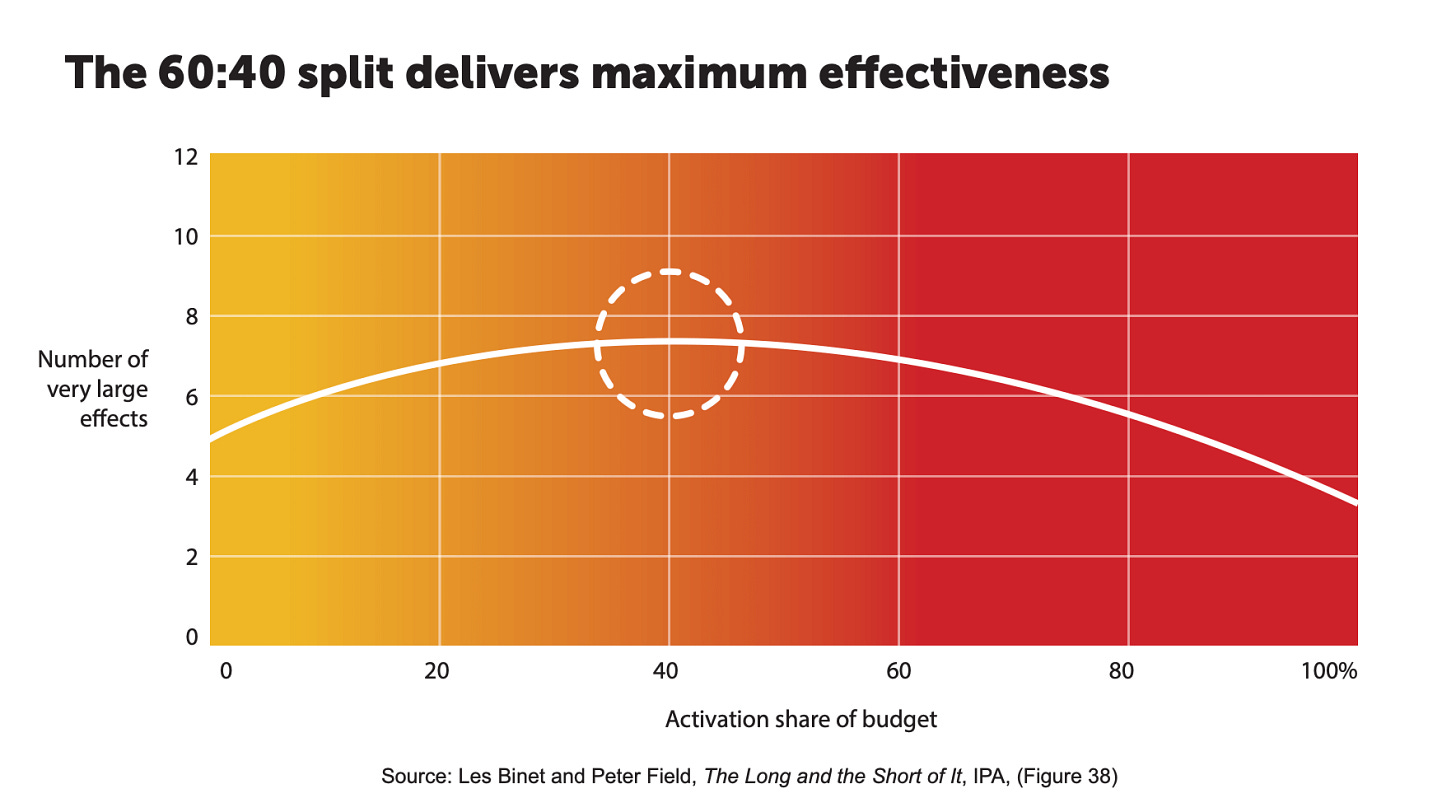Segmenting Your Marketing Budget
Beyond the 60:40 Rule
Introduction
For over a decade, the 60:40 rule—first proposed by Les Binet and Peter Field—has served as a practical benchmark for marketers seeking to balance long-term brand building with short-term sales activation. Their research showed that campaigns with roughly 60 per cent investment in brand and 40 per cent in activation typically delivered stronger business outcomes than those skewed too heavily toward immediate conversion. In an era where short-termism often dominated marketing planning, the rule offered a compelling corrective.
However, as more brands adopt this ratio, a crucial question arises: Is 60:40 the correct ratio for your brand, in your category, with your objectives? A useful benchmark can easily become a rigid formula if not applied with context. Purchase frequency, market maturity, pricing strategy, and even internal structure can all influence what allocation will actually drive sustainable growth.
This article examines how marketers can move beyond the 60:40 default and instead design segmented budgets that reflect the specific commercial realities they face. The aim is not to replace the rule, but to adapt it—so that brand and performance investments serve the business, not the other way around.
The Origin and Value of the 60:40 Rule
The 60:40 rule emerged from one of the most influential bodies of evidence in marketing effectiveness. In their work for the IPA, Les Binet and Peter Field analysed hundreds of campaigns across multiple categories and found that those which allocated around 60 per cent of their media budget to long-term brand building and 40 per cent to short-term activation consistently outperformed others in terms of business outcomes. These included profit growth, market share gains, pricing power and customer acquisition.
This was not a theoretical argument. It was a response to a growing imbalance in the industry. As digital channels became dominant and pressure for quarterly performance intensified, marketers increasingly shifted spend toward immediate, measurable tactics—often at the expense of brand. The 60:40 guidance helped restore a sense of proportion. It legitimised emotional, broad-reach campaigns by showing their commercial impact, not just their creative value.
For many brands, adopting the 60:40 split was a strategic correction. It provided a defensible structure in budget negotiations, aligned the brand and performance teams, and established a common language around effectiveness. However, while the ratio is proper, it was never intended to be a universal rule for all brands in all situations. The next step is understanding when, why, and how to adjust it.
Keep reading with a 7-day free trial
Subscribe to Growth, Brands and More to keep reading this post and get 7 days of free access to the full post archives.



